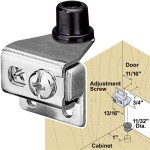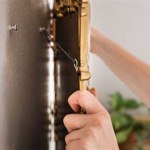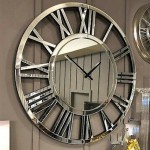How To Know A Two-Way Mirror
Two-way mirrors, also known as one-way mirrors or observation mirrors, create an illusion of transparency while allowing discreet observation from the other side. Understanding how to identify a two-way mirror is crucial for maintaining personal privacy. Several methods can help determine if a reflective surface is a standard mirror or a two-way mirror.
The most reliable method for detecting a two-way mirror involves examining the lighting conditions. Two-way mirrors function optimally when the observation side is significantly darker than the mirrored side. This difference in lighting allows the mirror to reflect light from the brighter side, masking the observation room behind. If the lighting appears unusually dim or uneven behind a reflective surface, it warrants further investigation.
The "fingernail test" is a commonly cited, though less reliable, method. This test involves placing one's fingernail directly against the reflective surface. With a standard mirror, a noticeable gap will appear between the fingernail and its reflection due to the glass layer present. With a two-way mirror, the reflection appears much closer to the nail due to the thin reflective coating being applied directly to the glass surface. However, the thickness of the glass and the reflective coating can vary, affecting the test's accuracy. Therefore, this method should not be solely relied upon.
Another method involves observing the surroundings. Carefully examine the area around the suspected mirror. Look for any unusual fixtures, such as ventilation grilles, small gaps, or hidden cameras, which might indicate a hidden observation area. Walls that appear unusually thick or hollow may also suggest a concealed space. These observations can provide valuable clues, especially when combined with other methods.
Sound plays a crucial role in detecting hidden spaces. Try knocking on the surface of the suspected mirror and listen carefully to the sound. A solid wall behind a regular mirror will produce a dull thud, while a hollow space behind a two-way mirror will produce a more hollow, reverberant sound. This method can be particularly effective in identifying concealed areas behind large reflective surfaces.
Using a bright light source can also help identify a two-way mirror. Shining a strong flashlight directly at the surface can penetrate the reflective coating and reveal the observation room beyond. This method works best in relatively dark conditions. Observe for any objects or movements on the other side of the mirror. A smartphone flashlight can be a readily available tool for this purpose.
Attempting to peer through the mirror at an oblique angle can sometimes be effective. By positioning oneself close to the mirror's edge and trying to look through it at a sharp angle, one might be able to catch a glimpse of the observation room if the lighting conditions are favorable. This technique leverages the principle that the reflectivity of a two-way mirror is not perfectly uniform across all angles.
Consider the context of the location. Two-way mirrors are typically used in specific environments such as police interrogation rooms, security checkpoints, and research facilities. Assessing the likelihood of a two-way mirror being present based on the location's purpose can provide valuable context for evaluating the situation. However, this should not be the sole determinant.
For definitive confirmation, consulting a security professional is advisable. Trained professionals possess the expertise and specialized equipment to unequivocally determine the nature of a reflective surface. They can utilize advanced techniques beyond the scope of casual observation, providing irrefutable evidence.
While various methods exist for identifying potential two-way mirrors, combining these approaches is crucial for increasing accuracy. Relying on a single method may lead to incorrect conclusions. A comprehensive assessment considering lighting, sound, visual inspection, and contextual clues provides the most reliable means of identifying two-way mirrors and protecting personal privacy.
Understanding the principles behind two-way mirrors and utilizing the outlined methods empowers individuals to assess their surroundings effectively and take appropriate measures to safeguard their privacy. Maintaining awareness of the environment and employing these techniques can offer greater peace of mind in various situations.

How To Tell If A Mirror Is Two Way Or Not 8 Steps With Pictures
How You Do A Quick Check For Cams Or Two Way Mirrors In Trial Rooms Quora

How To Tell If A Mirror Is Two Way Or Not 8 Steps With Pictures

How To Detect A Two Way Mirror Fingernail Test

How To Tell If A Mirror Is Two Way Or Not Quora

How To Tell If A Mirror Is Two Way Or Not 8 Steps With Pictures

How To Tell If You Re In A Room Restroom Motel Etc With Mirror Or
Is It Glass Or A Two Way Mirror The Balancing Act

Tips For Identifying Whether Your Mirror Is Two Way Or Not Ledmyplace
A Mirror Or 2 Way Glass








